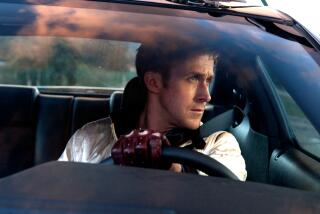Thieves, detectives, agents: 3 ways to make a cool character

The heroes and villains of crime novels tend to be average Joes driven into entertaining situations that are realistic enough that readers can understand, three crime authors said Sunday at the Los Angeles Times Festival of Books.
Lee Goldberg, screenwriter for the former hit show “Monk” on USA Network and author of “Chase” and “Heist” with Janet Evanovich, was on the panel. In six months, Goldberg and Evanovich went from discussing books while having dinner to producing a New York Times bestseller. They had been reminiscing about the types of characters they like when they realized their memories overlapped.
“The characters are essentially wish fulfillment for Janet and I,” he said. “The characters entertain us.”
FULL COVERAGE: Festival of Books
That’s how they came up with, for example, a female Navy SEAL -- a position that wasn’t open to women at the time. It was the quickest way to produce a woman who instantly stood out as someone who could take care of herself. “We wanted to have a different kind of female lead,” Goldberg said.
Another key for Goldberg is keeping people entertaining.
“All the heroes now are so grim and miserable,” Goldberg said. “They’re alcoholics or divorced, dealing with angst and corruption or having their wife filleted in front of them. Does anyone have any fun anymore?”
To inject that fun requires that every scene has conflict and then the humor comes out of the conflict, he said. For example, “[t]he key to “Monk” was a very complicated, tragic character. We wanted to put him in tragic situations. Without that emotional involvement, the phobias of Monk would be shtick. It would be a cartoon,” he said.
INTERACTIVE GAME: How to be a writer
T. Jefferson Parker, author of “The Famous and the Dead,” said he knew he would be writing a series and wanted his main character to be someone who readers could get along with.
“I wanted him to be good at his job but not driven,” Parker said of Charlie Hood. “I didn’t want any layer of suspicion about him. He’s a regular guy.”
“As the evil mounts around Charlie, we pull for him more and more. He’s a composite of traits I admired.”
Cara Black, author of “Murder in Pigalle,” was the third panelist. The Paris detective at the center of Black’s books is based on one she met at an office across the street from the Lourve, she said. The encounter happened by chance when Black was waiting for a bus and saw a sign for the office.
The detective spoke of struggles balancing her family and work life, and that essential conflict that all humans must endure plays a central role in defining where to take the novel’s heroine, she said.
“She has this baby on the way and wants to be a good mother but also doesn’t want to be like her own mother,” Black said of her character.
Black produced plenty of laughs among the audience for the panel discussion as she explained the challenges of setting a book in the late 1990s.
She said she’s received emails complaining about her reference to francs, the currency that has since replaced by the euro -- and that she’s befuddled teens who’ve never seen a rotary phone.
“A world without texting, Facebook or Twitter,” she said.
To help draw readers in, she said, she latches her books to world events, such as Princess Diana’s death in 1997.
More to Read
Sign up for our Book Club newsletter
Get the latest news, events and more from the Los Angeles Times Book Club, and help us get L.A. reading and talking.
You may occasionally receive promotional content from the Los Angeles Times.







